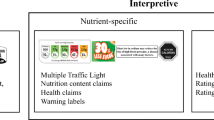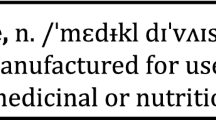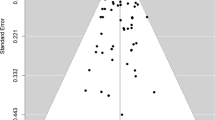Abstract
Unapproved or “off-label” uses of prescription drugs are quite common. The extent of this use may be influenced by the promotional efforts of manufacturers. This paper investigates how a manufacturer makes promotional decisions in the presence of a price–volume agreement. We developed an optimization model in which the manufacturer maximizes its expected profit by choosing the level of marketing effort to promote uses for different indications. We considered several ways a volume threshold is determined. We also compared models in which off-label uses are reimbursed and those in which they are forbidden to illustrate the impact of off-label promotion on the optimal decisions and on the decision maker’s performance. We found that the payer chooses a threshold which may be the same as the manufacturer’s optimal decision. We also found that the manufacturer not only considers the promotional cost in promoting off-label uses but also considers the health benefit of off-label uses. In some situations, using a price–volume agreement to control leakage may be a better idea than simply preventing leakage without using the agreement, from a social welfare perspective.





Similar content being viewed by others
Notes
m i does shift N i but in each of the three separate markets, and these three separate markets, by definition, have different values of h i . In this way the average benefit obtained by the payer does vary in M i . This is an approximation to the more general case where total benefits vary by promotional effort [i.e., b(m i )], which we discuss in the conclusions.
This is a special case of D being the total health benefit for all possible uses, in which the weights of the demand are the health benefits while in the special case the weights are 1 and \(- \kappa .\)
References
Taylor, R., Drummond, M., Salkeld, G., Sullivan, S.: Inclusion of cost effectiveness in licensing requirements of new drugs: the fourth hurdle. BMJ 329(7472), 972–975 (2004)
Radley, D.C., Finkelstein, S.N., Stafford, R.S.: Off-label prescribing among office-based physicians. Arch. Intern. Med. 166, 1021–1026 (2006)
Tabarrok, A.T.: Assessing the FDA via the anomaly of off-label drug prescribing. Indep. Rev., V(1), 25–53 (2000)
Coyle, D., Buxton, M.J., O’Brien, B.J.: Stratified cost-effectiveness analysis: a framework for establishing efficient limited use criteria. Health Econ. 12, 421–427 (2003)
The New York Times: Pfizer to pay $430 million over promoting drug to doctors (2004). http://query.nytimes.com/gst/fullpage.html?res=9400EEDC1F3CF937A25756C0A9629C8B63&sec=&spon=&pagewanted=all. Accessed 25 Nov 2008
The New York Times: Lilly considers $1 billion fine to settle case (2008). http://www.nytimes.com/2008/01/31/business/31drug.html. Accessed 07 Sept 2008
The New York Times: No Lipitor mug? Drug makers cut out goodies for doctors (2008). http://www.nytimes.com/2008/12/31/business/31drug.html. Accessed 08 Jan 2009
The New York Times: Drug maker said to pay ghostwriters for journal articles. (2008). http://www.nytimes.com/2008/12/12/business/13wyeth.html?_r=0. Accessed 02 Jan 2009
The New York Times: Ruling is victory for drug companies in promoting medicine for other uses (2012). http://www.nytimes.com/2012/12/04/business/ruling-backs-drug-industry-on-off-label-marketing.html?_r=0. Accessed 13 Jan 2013
The New York Times: Medicare and ‘off-label’ cancer drugs (2009). http://www.nytimes.com/2009/02/10/opinion/10tue2.html?_r=1. Accessed 10 Feb 2009
The New York Times: Johnson & Johnson unit settles state cases over Risperdal (2012). http://www.nytimes.com/2012/08/31/business/johnson-johnson-unit-settles-state-cases-over-risperdal.html. Accessed 31 Aug 2012
The New York Times: Pfizer Pays $2.3 billion to settle marketing case (2009). http://www.nytimes.com/2009/09/03/business/03health.html?_r=0. Accessed 14 Nov 2013
The New York Times: Pfizer settles a drug marketing case for $491 million (2013). http://www.nytimes.com/2013/07/31/business/pfizer-settles-a-drug-marketing-case-for-491-million.html?_r=0. Accessed 31 July 2013
Sullivan, S.: Measuring image spillovers in umbrella-branded products. J. Bus. 63(3), 309–329 (1990)
Swaminathan, V., Fox, R.J., Reddy, S.K.: The impact of brand extension introduction on choice. J. Mark. 65(4), 1–15 (2001)
Lopert, R., Henry, D.: The pharmaceutical benefits scheme: economic evaluation works…but is not a panacea. Aust. Prescr. 25(6), 126–127 (2002)
Rickard, M.: The pharmaceutical benefit scheme: options for cost control. Parliamentary library. Current Issues Brief. Parliament of Australia (2002)
Lopert, R.: Evidence-based decision-making within Australia’s pharmaceutical benefits scheme. Issue Brief (Commonw Fund) 60, 1–13 (2009)
Willison, D., Wiktorowicz, M.: International experience with pharmaceutical policy: common challenges and lessons for Canada. Center for Health Economics and Policy Analysis. CHEPA Working Paper Series (2001)
Kanavos, P.: Overview of pharmaceutical pricing and reimbursement regulation in Europe (2003). http://www.eco.uc3m.es/sesam/actividades/jornada_legislacion/DOC%209%20EMEARoadMap.pdf. Accessed 28 Dec 2009
Puig-Junoy, J.: Incentives and pharmaceutical reimbursement reforms in Spain. Health Policy 67, 149–165 (2004)
Paris, V., Docteur, E.: Pharmaceutical pricing and reimbursement policies in Canada. In: OECD health working papers (2006)
Birkett, D.J., Mitchell, A.S., McManus, P.: A cost-effectiveness approach to drug subsidy and pricing in Australia. Health Aff 20(3), 104–114 (2001)
Balachander, S., Ghose, S.: Reciprocal spillover effects: a strategic benefit of brand extensions. J. Mark. 67(1), 4–13 (2003)
Erdem, T., Sun, B.: An empirical investigation of the spillover effects of advertising and sales promotions in umbrella branding. J. Mark. Res. 39(4), 408–420 (2002)
Lei, J., Dawar, N., Lemmink, J.: Negative spillover in brand portfolios: exploring the antecedents of asymmetric effects. J. Mark. 72, 111–123 (2008)
Mizik, N., Jacobson, R.: Are physicians “easy marks?” Quantifying the effects of detailing and sampling on new prescriptions. Manag. Sci. 50(12), 1704–1715 (2004)
Rizzo, J.: Advertising and competition in the ethical pharmaceutical industry: the case of antihypertensive drugs. J. Law Econ. 42(1), 89–116 (1999)
Donohue, J., Berndt, E.: Effects of direct-to-consumer advertising on medication choice: the case of antidepressants. J. Public Policy Mark. 23(2), 115–127 (2004)
Gonul, F., Carter, F., Petrova, E., Srinivasan, K.: Promotion of prescription drugs and its impact on physicians’ choice behavior. J. Mark. 65(3), 79–90 (2001)
Windmeijer, F., De Laat, E., Douven, R., Mot, E.: Pharmaceutical promotion and GP prescription behavior. Health Econ. 15(1), 5–18 (2006)
Zaric, G., O’Brien, B.: Analysis of a pharmaceutical risk sharing agreement based on the purchaser’s total budget. Health Econ. 14(8), 793–803 (2005)
Zhang, H., Zaric, G.S., Huang, T.: Optimal design of a pharmaceutical price-volume agreement under asymmetric information about expected market size. Prod. Oper. Manag. 20(3), 334–346 (2011)
Zhang, H., Zaric, G.: Promotion and leakage under a pharmaceutical price-volume agreement. Inf. Syst. Oper. Res. 49(4), 247–253 (2011)
Antonanzas, F., Juarez-Castello, C.A., Rodriguez-Ibeas, R.: Should health authorities offer risk-sharing contracts to pharmaceutical firms? A theoretical approach. Health Econ. Policy Law 6(3), 391–403 (2011)
Barros, P.P.: The simple economics of risk-sharing agreements between the NHS and the pharmaceutical industry. Health Econ. 20(4), 461–470 (2011)
Wosinska, M.: Promoting to multiple agents: the case of direct-to-consumer drug advertising. Chapter in unpublished Ph.D. dissertation. Department of Economics, University of California-Berkeley, Berkeley, CA (2001)
Brady, M., Ireland, D.: Advertising effectiveness and spillover: simulating strategic interaction using advertising. In: 25th International Conference of the System Dynamics Society, Boston, Massachusetts (2007)
Bala, R., Bhardwaj, P.: Detailing vs. direct-to-consumer advertising in the prescription pharmaceutical industry. Manag. Sci. 56(1), 148–160 (2010)
Adamski, J., Codman, B., Ofierska-Sujkowska, G., Herholz, H., Wendykowska, K., Laius, O., Jan, S., Sermet, C., Zara, C., Kalaba, M., Gustafsson, R., Garuolienè, K., Haycox, A., Garattini, S., Gustafsson, L.: Risk sharing arrangements for pharmaceuticals: potential considerations and recommendations for European payers. BMC Health Serv. Res. 10(153), 1–26 (2010)
Acknowledgments
This work was funded by the Natural Sciences and Engineering Research Council of Canada (NSERC) and a Premier’s Research Excellence Award. Earlier versions of this work were presented at POMS Annual Conference and INFORMS Annual Meeting.
Author information
Authors and Affiliations
Corresponding author
Appendix
Appendix
Proof for proposition 2
By taking the derivative of E[NMB(T)] = 0 for both sides with respect to h i , we have \(\frac{{\partial E[{\text{NMB}}]}}{\partial T}\frac{{{\text{d}}T^{M,N} }}{{{\text{d}}h_{i} }} + \frac{\partial E[NMB]}{{\partial h_{i} }} = 0.\) That is, \(\frac{{{\text{d}}T^{M,N} }}{{{\text{d}}h_{i} }} = - {{\frac{\partial E[NMB]}{{\partial h_{i} }}} \mathord{\left/ {\vphantom {{\frac{\partial E[NMB]}{{\partial h_{i} }}} {\frac{\partial E[NMB]}{\partial T}}}} \right. \kern-0pt} {\frac{\partial E[NMB]}{\partial T}}} > 0\) because \(\frac{{\partial E[{\text{NMB}}]}}{\partial T} < 0\) at \(T^{M,N}\). By following the same logic, we obtain the properties of \(T^{M,N}\) with respect to other parameters. \(\frac{{{\text{d}}m^{M,N} }}{{{\text{d}}h_{i} }} = \frac{{\partial m^{E,*} }}{{\partial T^{M,N} }}\frac{{\partial T^{M,N} }}{{\partial h_{i} }} + \frac{{\partial m^{E,*} }}{{\partial h_{i} }} \ge 0\), and similarly we have \(\frac{{\partial m^{M,N} }}{\partial c} \le 0\).
Proof to problem (P)
Given \(m_{i}^{E,*}\) (which is a function of T), the payer’s objective becomes a function of T:
The first-order and second-order derivatives of D with respect to T are
and
Note that \(\frac{{{\text{d}}m_{1}^{E,u} }}{{{\text{d}}T}} = \frac{{\varphi_{2}^{''} \varphi_{3}^{''} (1 + l_{12} + l_{13} )}}{{\left( {\varphi_{2}^{''} \varphi_{3}^{''} \sum\nolimits_{j = 1}^{3} {l_{1j} + \varphi_{1}^{''} \varphi_{3}^{''} } \sum\nolimits_{j = 1}^{3} {l_{2j} + \varphi_{1}^{''} \varphi_{2}^{''} } \sum\nolimits_{j = 1}^{3} {l_{3j} } } \right) + {{\varphi_{1}^{''} \varphi_{2}^{''} \varphi_{3}^{''} } \mathord{\left/ {\vphantom {{\varphi_{1}^{''} \varphi_{2}^{''} \varphi_{3}^{''} } {\alpha pf}}} \right. \kern-0pt} {\alpha pf}}}}.\) Similar formulas are obtained for \({\text{d}}m_{2}^{E,u} /{\text{d}}T\) and \({\text{d}}m_{3}^{E,u} /{\text{d}}T,\) which are substituted into (10). Thus, when \(T \ge \overline{T} = \hbox{max} (T^{1} ,T^{2} ,T^{3} ),\) we have
The denominator of (11) is always positive because \(\varphi_{i}^{''} > 0.\) Thus, the sign of dD/dT depends on the sign of the numerator. Let \(\varGamma\) represent the numerator of (11), i.e., \(\varGamma = (1 - \kappa l_{12} - \kappa l_{13} )\sum\nolimits_{j = 1}^{3} {l_{1j} } \varphi_{2}^{''} \varphi_{3}^{''} + (l_{21} - \kappa - \kappa l_{23} )\sum\nolimits_{j = 1}^{3} {l_{2j} } \varphi_{1}^{''} \varphi_{3}^{''} + (l_{31} - \kappa l_{32} - \kappa )\sum\nolimits_{j = 1}^{3} {l_{3j} } \varphi_{1}^{''} \varphi_{2}^{''} .\) \(\varGamma\) is a constant over T and is decreasing in \(\kappa\). Let \(\kappa_{0}\) be the value of \(\kappa\) where \(\varGamma = 0.\) Thus,
dD/dT > 0 if \(\kappa < \kappa_{0} ,\) dD/dT < 0 if \(\kappa > \kappa_{0}\) and dD/dT = 0 if \(\kappa = \kappa_{0} .\) That is, the payer would be indifferent about T if \(\kappa = \kappa_{0} .\) Without the NMB constraint, the payer will set \(T = \infty\) when \(\kappa < \kappa_{0}\) and T = 0 otherwise. Since \(1 + l_{23} \ge l_{21}\) and \(1 + l_{32} \ge l_{31} ,\) the second and third components of the denominator of \(\kappa_{0}\) are always larger than those of the numerator. Thus, \(\kappa_{0} \le 1\) if \(l_{12} + l_{13} \ge 1.\)
Rights and permissions
About this article
Cite this article
Zhang, H., Zaric, G.S. Using price–volume agreements to manage pharmaceutical leakage and off-label promotion. Eur J Health Econ 16, 747–761 (2015). https://doi.org/10.1007/s10198-014-0626-0
Received:
Accepted:
Published:
Issue Date:
DOI: https://doi.org/10.1007/s10198-014-0626-0




